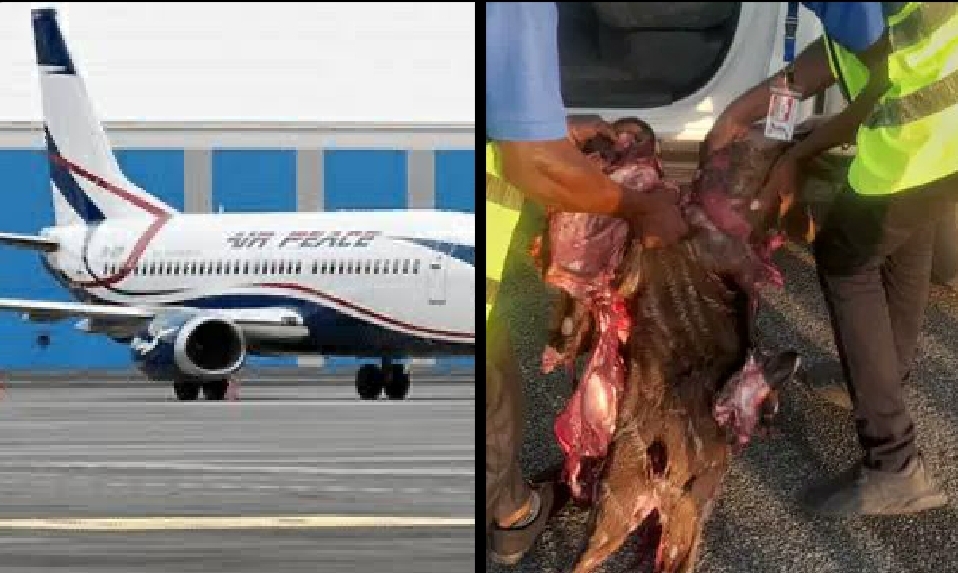
Air Peace Aircraft Grounded After Antelope Collision on Abuja Runway: A Wake-Up Call for Wildlife Safety

On May 11, 2025, a startling incident unfolded at Nnamdi Azikiwe International Airport in Abuja, Nigeria, where an Air Peace aircraft, while taxiing on the runway, collided with an antelope.
The impact was severe enough to ground the plane, leaving it classified as an Aircraft on Ground (AOG), and tragically, the antelope did not survive.
The Nigerian Civil Aviation Authority (NCAA) swiftly confirmed the event, reassuring passengers that safety measures were being prioritized.
This unusual accident, captured in images shared by Nigeria Stories on X, highlights a broader issue in aviation: the persistent challenge of wildlife encounters on runways.
Globally, wildlife strikes pose a significant risk to aviation safety.
According to data from the International Civil Aviation Organization (ICAO), more than 20,000 wildlife strikes are reported each year, with birds accounting for the majority.
However, mammals like antelopes, though involved in only about 3% of these incidents, often cause substantial damage due to their size and weight.
The Air Peace incident underscores how such collisions can disrupt operations, potentially leading to costly repairs and delays, not to mention the safety risks for passengers and crew.
Airports in regions with abundant wildlife, like Nigeria, face heightened challenges in managing these risks, especially if surrounding habitats are not adequately controlled.
The condition of Nnamdi Azikiwe International Airport’s infrastructure may also play a role in such incidents.
Originally designed with a 20-year lifespan, the airport’s runway was already 40 years old by 2017, showing visible signs of deterioration.
A rehabilitation project completed in 2017 by Julius Berger Nigeria Plc aimed to address these issues, but aging infrastructure can indirectly contribute to safety hazards.
Cracks, overgrowth, or poor maintenance can attract wildlife seeking food or shelter, increasing the likelihood of runway incursions.
This incident raises questions about whether enough is being done to mitigate wildlife risks at the airport, especially in terms of habitat management and perimeter security.
Wildlife management at airports is a complex issue, as noted by the Federal Aviation Administration (FAA). Strategies like habitat deterrence—making the airport environment less appealing to animals by removing food sources or water—are critical.
However, the Air Peace collision suggests that more proactive measures, such as enhanced fencing or regular wildlife patrols, might be necessary.
For an airport like Nnamdi Azikiwe, located in a biodiversity-rich area, this event should serve as a reminder to prioritize and invest in comprehensive wildlife hazard management to ensure safer skies for all.


